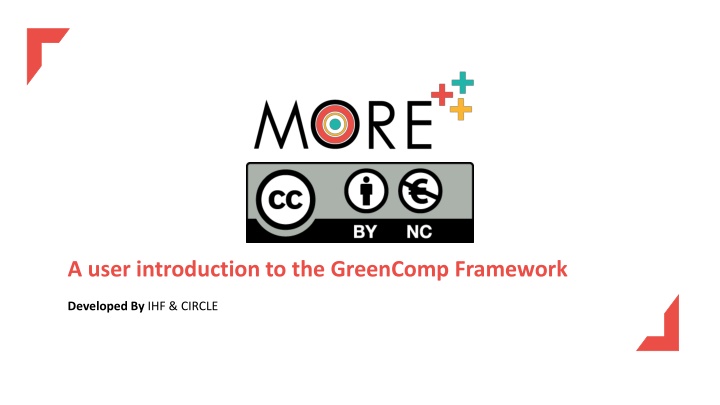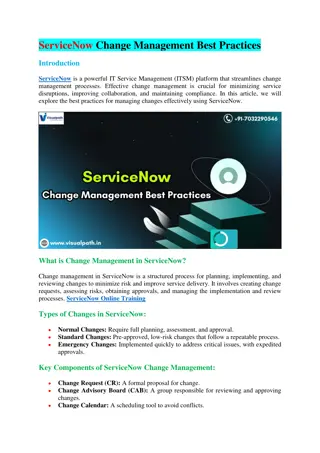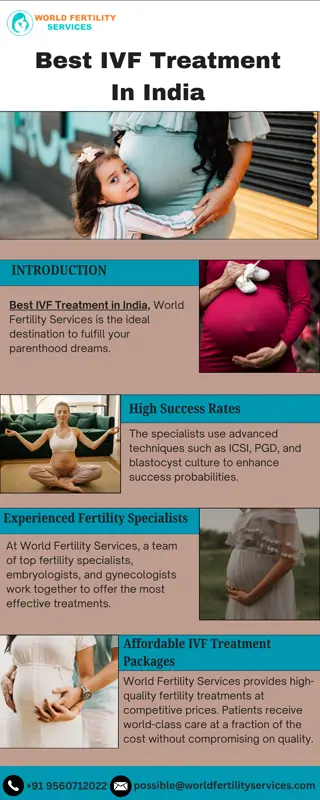
The GreenComp Framework for Sustainability Education
Explore the GreenComp Framework developed by IHF & CIRCLE, focusing on sustainability competences and integrating sustainability into educational systems. Learn about the European Sustainability Competence Framework, policy context, and the key components of GreenComp to promote environmental sustainability in education.
Download Presentation

Please find below an Image/Link to download the presentation.
The content on the website is provided AS IS for your information and personal use only. It may not be sold, licensed, or shared on other websites without obtaining consent from the author. If you encounter any issues during the download, it is possible that the publisher has removed the file from their server.
You are allowed to download the files provided on this website for personal or commercial use, subject to the condition that they are used lawfully. All files are the property of their respective owners.
The content on the website is provided AS IS for your information and personal use only. It may not be sold, licensed, or shared on other websites without obtaining consent from the author.
E N D
Presentation Transcript
A user introduction to the GreenComp Framework Developed By IHF & CIRCLE
Objectives and Goals: At the end of this module you will be able to: Objective 1: Understand the background and ratio of the GreenComp Framework Objective 2: Get familiar with the concept of Sustainability Competences Objective 3: Acquire the fundamentals of Sustainability Competences
Sustainability Competences GreenComp + + + + What are sustainability GreenComp: what is it Competences GreenComp: aim + Teaching and learning GreenComp: methodology sustainability competences
Unit 1: GreenComp Framework The European sustainability competence framework Integrating sustainability into our educational and training institutions is essential to safeguarding both the environment and public health. Developing competences and acquiring the information, skills, and attitudes necessary to genuinely cherish our planet and implement protective measures are made possible through education and training. This will facilitate the shift to an equitable, environmentally friendly economy and society. The European Commission has set learning for environmental sustainability as one of its top goals for the forthcoming years in addition to other objectives. To know more about it: GreenComp: the European sustainability competence framework
Unit 1: GreenComp Framework The policy context of the Sustainability competence framework As stated in the European Green Deal, the Commission has created this European Sustainability Competence Framework, GreenComp, in response to prior successful initiatives to promote competence-based education for lifelong learning. Member States from the EU have already started integrating sustainability ideas into academic and professional courses. GreenComp may assist all educators and students in Member States in integrating environmental sustainability concepts into all educational systems and curricula by building on this effort.
Unit 1: GreenComp Framework Section 1.1: GreenComp What is it In order to support students in acquiring information, skills, and attitudes that encourage ways to think, plan, and act with empathy, responsibility, and care for our planet and for public health, GreenComp specifies a set of sustainable competencies to feed into educational programs. GreenComp consists of four interconnected Training Areas: 1. Acting for sustainability 2. Envisioning sustainable futures 3. Embracing complexity in sustainability 4. Embodying sustainability principles for each of which we have a set of three interrelated competences*. *competences in the sense of combination of: knowledge (what you know), skills (what you can do), attitudes (how you do it)
Training Area no.1 Embodying Sustainability Values Area Competence Descriptor To reflect on personal values; identify and explain how values vary among people and over time, while critically evaluating how they align with sustainability values. 1.1 Valuing sustainability To support equity and justice for current and future generations and learn from previous generations for sustainability. 1.Embodying suitability values 1.2 Supporting fairness To acknowledge that humans are part of nature; and to respect the needs and rights of other species and of nature itself in order to restore and regenerate healthy and resilient ecosystems. 1.3 Promoting nature
Training Area no.2 Embracing Complexity in Sustainability Area Competence Descriptor To approach a sustainability problem from all sides; to consider time, space and context in order to understand how elements interact within and between systems. 2.1 Systems thinking To assess information and arguments, identify assumptions, challenge the status quo, and reflect on how personal, social and cultural backgrounds influence conclusions. 2.2 Critical thinking 2.Embracing complexity in sustainability thinking and To formulate current or potential challenges as a sustainability problem in terms of difficulty, people involved, time and geographical scope, in order to identify suitable approaches to anticipating and preventing problems, and to mitigating and adapting to already existing problems. 2.3 Problem framing
Training Area no.3 Envisioning sustainable futures Area Competence Descriptor To envision alternative sustainable futures by imagining and developing alternative scenarios and identifying the steps needed to achieve a preferred sustainable future. 3.1 Futures literacy To manage transitions and challenges in complex sustainability situations and make decisions related to the future in the face of uncertainty, ambiguity and risk. To adopt a relational way of thinking by exploring and linking different disciplines, using creativity and experimentation with novel ideas or methods. 3.Envisioning sustainable futures 3.2 Adaptability 3.3 Exploratory thinking
Training Area no.4 Acting for Sustainability Area Competence Descriptor To navigate the political system, identify political responsibility and accountability for unsustainable behaviour, and demand effective policies for sustainability. 4.1 Political agency 4. Acting for sustainability 4.2 Collective action To act for change in collaboration with others. To identify own potential for sustainability and to actively contribute to improving prospects for the community and the planet. 4.3 Individual initiative
Unit 1: GreenComp Framework Section 1.2: GreenComp Aim The GreenComp Framework provides for: A model of sustainability competency areas and competencies A single resource that all individuals engaged in environmental sustainability education and training may use, share, and refer to A preliminary list of competence elements, including knowledge, skills, and attitudes, as illustrations of how to apply the competences A standard reference point for discussion, practice sharing, and peer learning among educators engaged in lifelong learning across the EU A contribution to make the competences portable and promote mobility in the EU for full participation in European society. Source: GreenComp
Unit 1: GreenComp Framework Section 1.3: GreenComp Methodology The development of a consensus based on a mixed method research approach led to the creation of the European sustainability competency framework. Through this process, GreenComp was gradually and steadily improved, and as a result, the comprehensive framework presented in this module was born. A heterogeneous group of over 75 professionals and stakeholders were contacted throughout the process to get their input and gradually come to an agreement. Participants in the group comprised academics and researchers with expertise in lifelong learning and sustainable education, as well as NGOs, youth representatives, teachers, and policymakers from EU Member States. Source: GreenComp
Unit 2: Sustainability Competences Section 2.1: Seeking a definition for sustainability competences GreenComp propose the following definition of sustainable competence: A sustainability competence empowers learners to embody sustainability values, and embrace complex systems, in order to take or request action that restores and maintains eco- system health and enhances justice, generating visions for sustainable futures. In order for learners to think, plan, and act sustainably and in harmony with the environment, this definition places a strong emphasis on the development of sustainability knowledge, skills, and attitudes as the ones that we disclosed in the four previous tables. Source: GreenComp
Unit 2: Sustainability Competences Section 2.2: Teaching and learning sustainability competences Since its first formal proposal in the 1960s, transformational learning has frequently been connected with sustainability education and related ideas because it seeks to fundamentally alter our views, attitudes, and behaviour through reflection on what we know and do not know. It challenges us to think critically about how we perceive our surroundings and the part we play in them. In order to reflect and embrace sustainability in their daily roles as students, consumers, producers, professionals, activists, policymakers, neighbours, employees, teachers and trainers, organizations, communities, and society at large, sustainability education aims to equip learners with the necessary skills. Source: GreenComp
Unit 2: Sustainability Competences Section 2.2: Teaching and learning sustainability competences The ultimate aim of and education to sustainability is to alter the person and the social institution through a holistic approach, it is thus seen in the same light as transformational learning. Both education and training are included in learning. It is what we define as follows: Learning for environmental sustainability aims to nurture a sustainability mindset from childhood to adulthood with the understanding that humans are part of and depend on nature. Learners are equipped with knowledge, skills and attitudes that help them become agents of change and contribute individually and collectively to shaping futures within planetary boundaries. Source: GreenComp
Summing up + + + GreenComp GreenComp specifies a set of sustainable competencies to feed into educational programs. + + + GreenComp Aims Integrating sustainability into our educational and training institutions in order to safeguard the environment and public health. + + + Sustainability Competences A sustainability competence empowers learners to embody sustainability values. Learning & Teaching Sustainability Competences + + + Learning for environmental sustainability aims to nurture a sustainability mindset with the understanding that humans are part of and depend on nature.
Self-assessment test: Learning sustainability competences is connected to: a. Transformational learning GreenComp was required by the Green Deal a. True b. False b. Co-creation learning c. Dual learning How many competences has the framework? How many areas does the framework have? a. 10 a. 3 b. 11 b. 4 c. 12 c. 5 Which SDG is crucial for sustainable development? SDG 3 a. b. SDG 4 c. SDG 5
THANK YOU moreproject.eu





